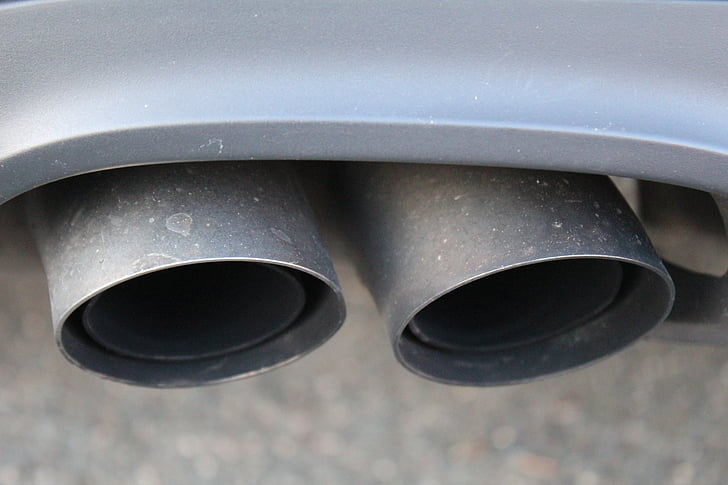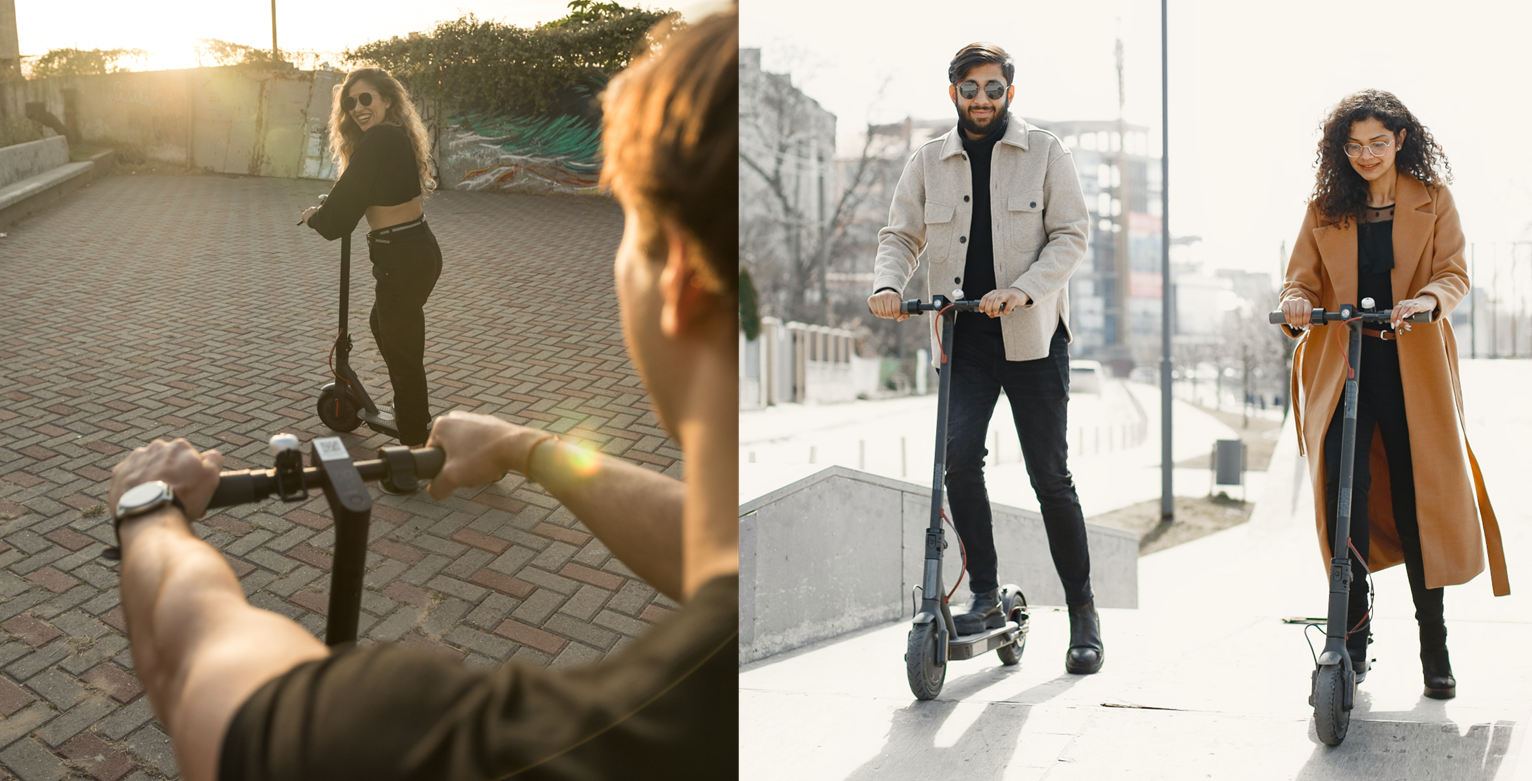Micromobility is here to stay, and it’s changing how we experience urban life for the better. With Unagi’s membership program, you can enjoy all the benefits of a top-tier electric scooter without the sky-high price of ownership or the inconvenience of ride-sharing.
Sustainable transportation. It's a major gear shift in urban commuting.
From electric cars to e bikes and e scooters - electric vehicles are designed to play a significant role in tackling climate change.
And all across north America, many states and cities are also starting to reshape their transport systems.
The future of urban commuting is all about prioritizing eco-friendly modes of transportation, which means:
Reducing emissions and being more energy efficient.
But what exactly is "sustainable transportation"?
How does an electric vehicle, such as the e scooter, help to alleviate traffic congestion and reduce harmful pollution in urban areas?
In this article, we'll explore the answers, find which states are rethinking their traditional modes of transport. And why e scooters are helping to lead the way in sustainable, short distance commuting.
It really is green for go...

What exactly is Sustainable Transportation?
Sustainable transportation refers to vehicles which are:
- Energy efficient - need less energy to achieve the same result, i.e. power vehicle movement.
- and have:
- Low or zero carbon emissions - reducing greenhouse gases, air pollution harmful to the environment and health.
- Use renewable energy sources - such as solar, wind, hydro (water), tidal, biomass (organic material), and hydrogen.
- Use secondary energy sources - specifically, an electricity charge stored in advanced technology batteries.
Currently, eco-friendly transportation can typically be the following types:
- Electric cars - private or rental.
- On-road vehicles - private trucks, private or public buses, and coaches.
- Trains and trams.
- Plug-in electric vehicles - e scooters, e bikes and mobility vehicles.

Why sustainable transportation is important for urban commuting
Owning and riding traditional gas powered vehicles continues to be the main method of urban transportation in the US. However, the level of harmful emissions is no longer considered acceptable or sustainable.
Currently, the US is pledged to cut emissions 50-52 percent by 2030 - much higher than the previous aim of 26-28 percent by 2025. (Source: World Resources Institute, Sep 2022).
But how much of a carbon footprint does the typical traditional gas vehicle make?
Traditional gas vehicle emission stats
The average passenger vehicle emits:

- 400 grams (approx.) of CO2 per mile - equivalent to the size of an American football!

- 4.6 metric tons (approx.) of carbon dioxide per year. 1 metric ton of CO2 would fill a cube the size of nearly the height of a US telephone pole - around 18 meters (60 feet).
Every ONE gallon of gasoline burned creates around 8,887 grams of carbon dioxide (CO2) - depending upon a vehicle’s fuel, fuel economy, and number of miles driven per year.
CO2 is not the only type of vehicle emission. An automobile running on gasoline also produces:
- Methane (CH4) and nitrous oxide (N2O) from the tailpipe.
Plus, all vehicles can emit hydrofluorocarbon (HFC) from leaking air conditioners.
(Source: United States Environmental Protection Agency (EPA)).
Air pollutants
A traditional gas combustion engine emits a key number of pollutants known to have a negative impact on both the environment and our health, including:
- Carbon monoxide (CO2)
- Nitrogen oxides (NOx)
- Particulate matter (PM)
- Hydrocarbons (HC)
- Sulphur dioxide (SO2)
Reducing harmful emissions and the impact upon our immediate urban environment, plus climate change itself, is an urgent priority.
How US states are transforming cities with sustainable transportation
More than a quarter (28 percent ) of US greenhouse gas emissions are caused by transportation. (Source: Inventory of U.S. Greenhouse Gas Emissions and Sinks 1990–2021).
The good news is many individual US states are actively transforming their cities and towns. By enabling sustainable transport and system infrastructure, including:
- Improving transit routes.
- Redesigning street layouts.
- Relooking at parking policies.
- Promoting electric vehicles.
- Prioritizing public health, safety, and environmental impacts.
Under the 'American Cities Challenge', 25 cities are stepping up their efforts to tackle climate change and promote sustainability for their citizens.
From the West Coast - Seattle to San Diego, the Midwest - Albuquerque through to Minneapolis and Columbus, and East Coast - from Boston to Orlando, and states elsewhere.
The introduction of carbon emission programs aims to:
- Reduce vehicle trips and promote electric vehicles.
- Cut CO2 emissions by 74 million metric tons by 2030.
Typical examples include:
Houston, Texas - to expand public and private electric vehicle (EV) charging points across the city.
Culver City, California - project along Ballona Creek to reduce traffic and pollution.
New York City - to replace fossil fuel-powered fleet vehicles with nearly 1,000 new electric vehicles, and new EV charging points.

What are your options for using sustainable transport?
Clearly, sustainable transportation is accelerating across states and cities. But the electric car is not the only option you have for the daily urban commute. Increasingly, more US cities are planning to switch their public transportation to electric driven vehicles.
But what if you prefer your own private mode of transport? Currently, you can opt for the pedal cycle, e bike and e scooter.
And the electric scooter is no longer built just for boy racers.
There's a new generation of cutting edge electric scooters being developed by manufacturers such as the California-based, Unagi brand who state,
"Our mission is... liberating people from the tyranny of transportation frustrations - the costs, inconveniences, the carbon emissions".
Built and styled for the future of sustainable mobility
Unagi stand out because they design now for current and future sustainable transportation.
Today's electric scooters are all sleek design and portability.
A "quiet" revolution is underway. And eco conscious individuals are at the forefront.
Not far behind is the daily commuter who's taking to riding a low cost, sustainable alternative to satisfy their urban transportation needs.
Here's some recent figures...
E scooter riding in North America
- 38.35 million - number of electric scooter users expected by 2027.
- 5.8 percent in 2023 - user penetration. Forecast to reach 7.4 per cent by 2027.
(Source: E-Scooter-sharing market, Statista Market Insights, July 2023)
So let's now look at why the advanced technology of the electric scooter has gained immense popularity in urban mobility. As the eco friendly alternative to traffic congestion and harmful emissions. In which the Unagi Voyager is helping to lead the way in sustainable urban commuting.

Top eco friendly advantages of electric scooters
Electric scooters are "environmentally friendly" because of:

Zero emissions
Electric vehicles produce zero emissions. Your electric scooter is powered by a lithium-ion battery, which delivers the electricity charge needed for running its motor(s).
This means your e scooter does not produce any harmful emissions, such as carbon dioxide, nitrogen oxides, or particulate matter.
The electric scooter is a much cleaner mode of transportation than traditional gasoline-powered vehicles. Which is designed to help reduce pollution in our cities and urban commuting routes.
More energy efficient
An electric scooter is more energy-efficient than a gas-powered vehicle. The key reason is: an e scooter needs less energy to travel the same distance. This is because it can travel farther on just a single battery charge. (Around 15.5 miles (25 km) on a Unagi e scooter).
Eco friendly mode
Electric scooters use an efficient energy management system that helps to optimize the use of the battery, so it can:
- Last longer
- Extend range
- Reduce the need for frequent charging
An efficient energy management system typically includes eco friendly features - or eco friendly modes. These control scooter speed and battery charge needed, depending on riding conditions.
Uses renewable energy sources
Electric scooters can be powered by electricity from renewable energy sources, such as solar or wind power. Unlike traditional internal combustion engines which rely on fossil fuels to ignite the fuel mixture and create power to drive the vehicle.
Small and easy to maneuver
E scooters are clearly:
- Smaller
- Lighter
- and therefore more maneuverable than traditional fuel-powered vehicles.

The advanced technology and improved safety features (such as the eco friendly modes) are inbuilt.
They are designed for answering many of the problems of a commuter's riding experience on a typical urban route, whether using your own vehicle or public transportation. And uniquely able to help alleviate traffic congestion, and reduce air pollution.
Low cost transportation
Riding an electric scooter is also light on your purse or wallet. The only running "cost" is the electricity needed to charge the scooter battery. You not only save money on paying for traditional gas. Your scooter's instant fold-up and "carry in your hand" portability also means huge 'eco' savings on parking and maintenance.
Easy, convenient and fun
Electric scooters are all about convenience - and are fun to ride! Not just for the daily commute but also for short distances, such as around your precinct or local park.

Summing up
When you subscribe to the electric scooter riding experience you're signing up to answer a whole range of diverse needs. For you and the environment.
Riding an electric scooter means you are helping to lead the way in:
- Being more energy efficient
- Using renewable energy sources
- Reducing CO2 emissions - and carbon footprint
- Preventing toxic, health damaging air pollution
- Alleviating traffic congestion
- Low cost transportation
Riding an electric scooter is the sustainable choice for anyone looking for a real eco-friendly alternative.
CLICK HERE to discover more knowledge and insight into the e scooter riding experience.

Stay current with the latest U.S. electric scooter laws in our 2025 guide. Updated annually since our first comprehensive guide, ensuring you have the most recent state and city regulations to ride responsibly”

The Slack Core 920R is currently the fastest electric scooter in 2025 that you can purchase without the need for pre-order.

Our selection of the best electric scooters 2025 spans the fastest e-scooters to the most portable ones, the ones designed for city riding and off-road, the best scooters for rain, budget electric scooters for students, and more powerful ones for skilled riders.

The Unagi Voyager is the best lightweight electric scooter for adults and teenagers. It is the ultraportable sequel to its predecessor, the Unagi Model One Classic.

If you're wondering whether an electric scooter with a seat is right for you, this is a detailed article that would suit your need.

Understand which personal electric vehicle is best, the choice between an electric bike or electric scooter might already be made for you by some critical factors, including portability and storage capacity.

In the U.S., most states don't require a license. For those that do, they usually just ask for a regular driver's license or a learner's permit.

Yes, you can bring an electric scooter on a plane, but it needs to have a lithium battery smaller than 100 watt-hours, which most don't.

Manufacturers advise against riding electric scooters in the rain. The main reasons are: water can fry the electronics, make the ride dangerous, and void your warranty.

The basis and the premise of my work is that we either operate out of love or we operate out of fear...Time is currency. The coolest thing about the scooters is that it's really quick, and it goes uphill. From there, traveling more efficiently and having a good time doing it--I think that's the most important thing.

Cynthia Leu has a full plate. A tech worker by day, Cynthia spends her off time balancing the parallel lives of a powerlifter, entrepreneur, mental health advocate, and more. Riding Unagi helps this USMC veteran cut down on everyday…

https://www.youtube.com/watch?v=7m2hVBE62LY Rasheed Muhammad is sick of Los Angeles traffic. In order to preserve his sanity, Rasheed has traded his everyday driving habit for the portable and beautiful Unagi Model One. It’s an essential accessory for navigating LA streets -- and…

Rich Lee, Co-Founder of San Francisco’s SPRO Coffee Lab, wants to share his love for coffee with the world. He depends on riding Unagi to avoid the hassle of navigating the parking crunch in the booming Mission Bay neighborhood.…












